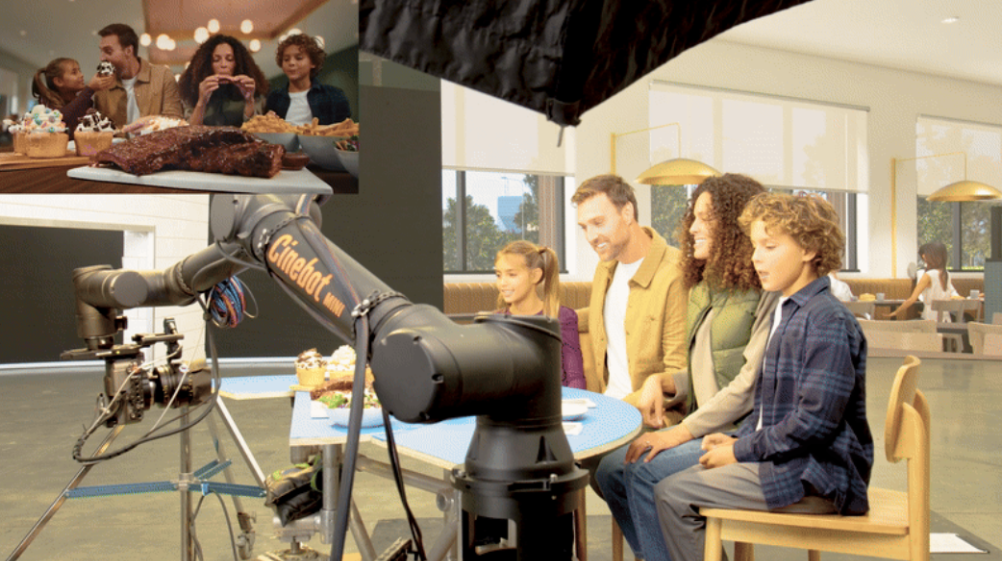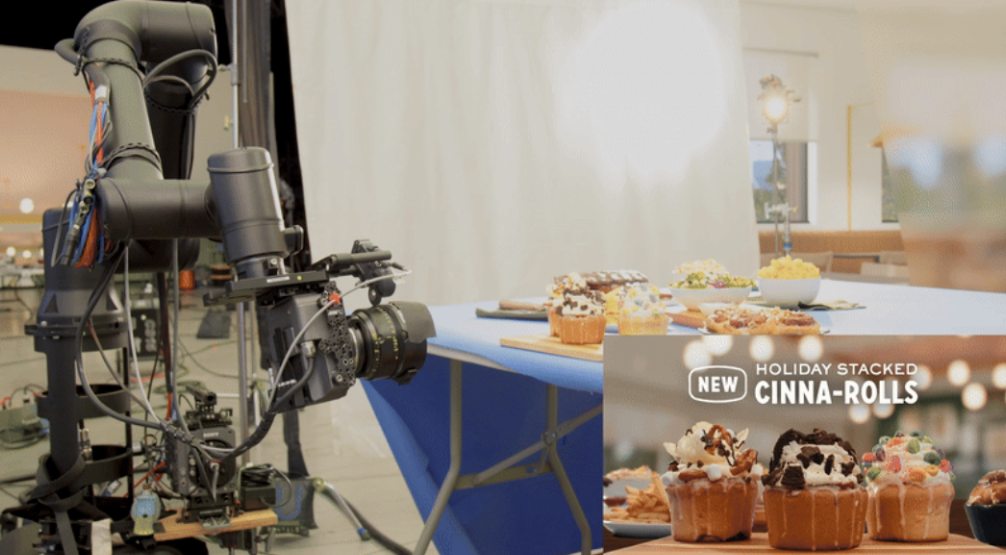A Director’s Take on Motion Control
As motion control continues to become more accessible, intuitive, and applicable to a wide variety of productions, we’ve been connecting with directors who bring a fresh, creative lens to using our Cinebot range on set. One of them is Megan Gámez, a rising talent in the commercial space whose work blends unique visuals with smart, technical execution. We spoke with Megan about her experience using the Cinebot Mini, how it fit into her workflow, and where she sees the role of robotics heading in the future of production.
As motion control continues to become more accessible, intuitive, and applicable to a wide variety of productions, we’ve been connecting with directors who bring a fresh, creative lens to using our Cinebot range on set. One of them is Megan Gámez, a rising talent in the commercial space whose work blends unique visuals with smart, technical execution. We spoke with Megan about her experience using the Cinebot Mini, how it fit into her workflow, and where she sees the role of robotics heading in the future of production.
Why Megan Gámez Embraces Robotics In Commercial Production
1. Can you tell us a bit about your background and how you got into commercial directing?
I fell in love with filmmaking as a kid, helping my dad build movie props — painting, soldering, and tagging along to sets sparked a passion that stuck with me. I didn’t go to film school, so I learned the industry from the ground up, starting as a PA and eventually moving up to art department coordinator. On weekends, I directed music videos for local bands and shot spec commercials to build a portfolio.
Eventually, I made the leap into full-time directing. I landed my first gigs by cold-pitching artists. Commercial work followed through sharing my music videos with production companies and saying yes to anything that helped me grow. I didn’t have a roadmap — just a drive to keep learning, keep creating, and keep showing up.
2. What types of projects do you typically work on, and what excites you most about the work you do?
Since stepping into commercial directing, I’ve become increasingly drawn to food. What excites me about food is how creatively flexible it is: you can bring in celebrity talent, comedy, dynamic transitions, music video-style energy, and striking cinematography, it’s one of the most creatively rich genres out there.
3. What challenges have you faced in your career, and how have you approached them?
One of the biggest challenges has been earning trust around the technical side of directing—especially in areas like camera builds, rigging, and complex moves. These aren’t typically the aspects associated with female directors, but they’re the parts I genuinely love.
I enjoy designing shots, problem-solving, and building things from scratch, whether it’s developing a custom rig, engineering a motion-control move, or integrating an LED volume.
To overcome doubt, I made it a habit to show up over-prepared, bringing diagrams, references, lens data, gear specs — whatever helped answer questions before they came up. That kind of preparation built trust, both from others and in myself.

4. How did you first come across MRMC and our robotics, and what was your experience like using them?
I’d been wanting to work with MRMC robots for a while, especially for music videos and stylised spots, but the first real opportunity came during a campaign for Perkins last year.
At first, I was a little nervous, unsure about the workflow or how long setups might take. But I quickly learned that success really comes down to the operator. The robots are incredibly precise and built for high-level performance, but it’s the expertise behind the controls that brings them to life.
The camera can move in infinite ways, but it’s the collaboration between the technology and the crew that turns that potential into something cinematic. I’ve been lucky to work with operators who are fast, collaborative, and always ready with solutions. Together, it made anything possible.
5. Are there any particular shots or projects where the Mini helped you achieve something you couldn’t have otherwise?
Absolutely. On one project, I designed a tabletop setup that rotated on two axes. The outer ring was for talent, and the inner ring was where we placed the food. The inner ring even folded down so we could get the camera closer.
The coolest part was syncing the Cinebot Mini with the table’s motorised rotation. Every time the table moved, the robot moved in perfect sync. That level of precision and creative control wouldn’t have been possible without the Mini and the talented team operating it. It allowed us to execute an ambitious idea with total fluidity.

6. How do you see tools like motion control shaping the future of commercial production?
I think the future of commercial production will be heavily shaped by the pairing of motion control and virtual production. Combining the precision of motion control with LED volumes or real-time rendered environments creates a powerful toolset for directors.
You can program complex, repeatable moves that sync with dynamic backgrounds, giving you in-camera VFX, consistent lighting, and real-time feedback without compromising quality. It saves time in post and opens up creative options that would be too costly or complex otherwise. It’s a more efficient, flexible, and imaginative way to work—and it’s only going to become more central.
7. Any advice for aspiring directors or creatives looking to break into the industry?
My advice is simple: just direct. You don’t need to wait until everything is perfect. Having experience in other departments can really help. It builds respect and makes collaboration easier, people go the extra mile when they know you value their craft.
There’s no one path to directing, but it’s easy to get comfortable in support roles. And the longer you go without directing, the harder it is for others to see you as one.
It takes courage to keep putting yourself out there, especially when rejection is part of the job. And now, with social media, we mostly see wins, not the setbacks that came first. So direct whenever you can. Even if it’s small, even if it’s scrappy, it counts. It keeps your voice alive, and eventually people will start to see you the way you see yourself.
